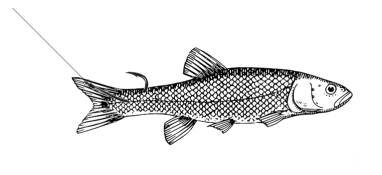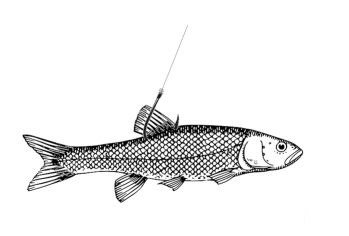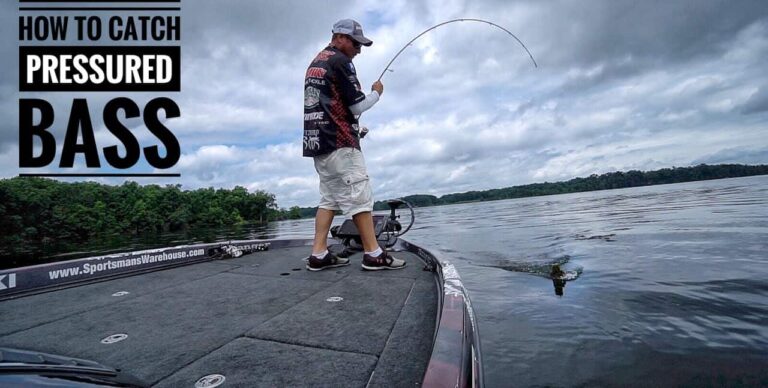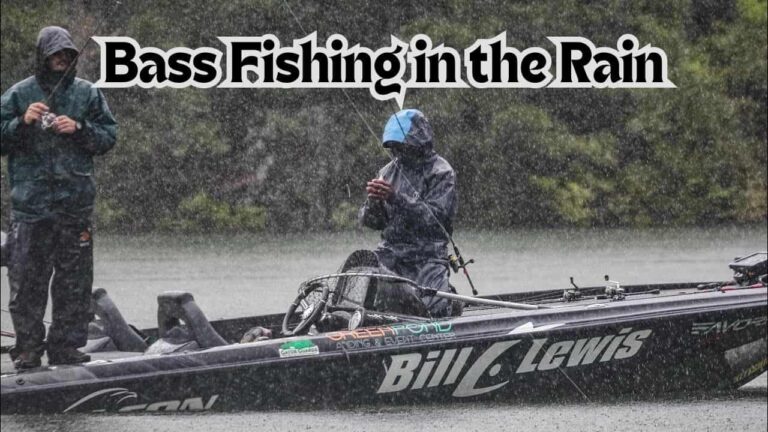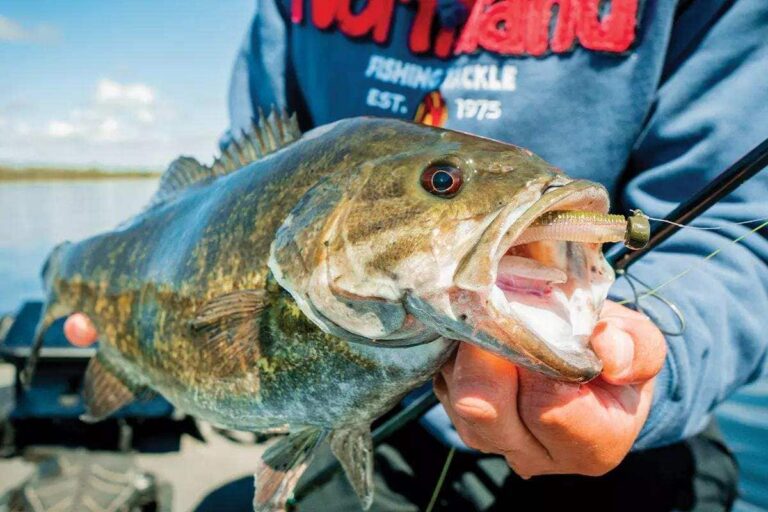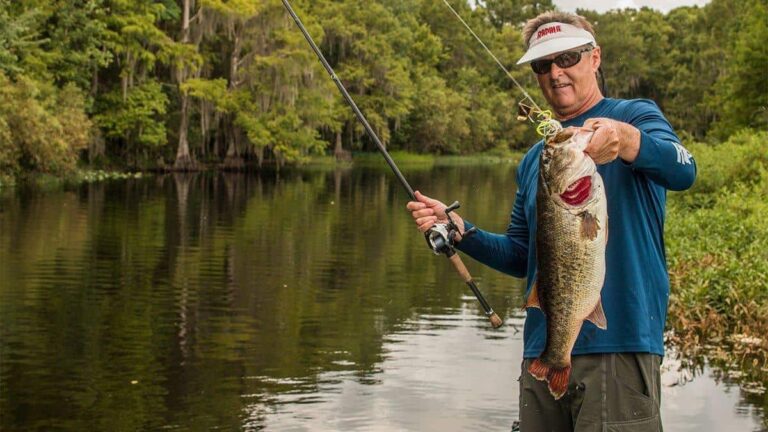How to Hook a Minnow Without Killing It: Live Bait Fishing

Fishing with live bait can be a great way to catch big finicky fish that are not easily fooled by lures.
Live minnows are one of the best live baits you can use because every body of water has all kinds of minnows that fish prey on.
But the key to this fishing style is the “live” part. So let’s dive into how to hook an minnow without killing it.
Best Ways to Hook Live Minnows
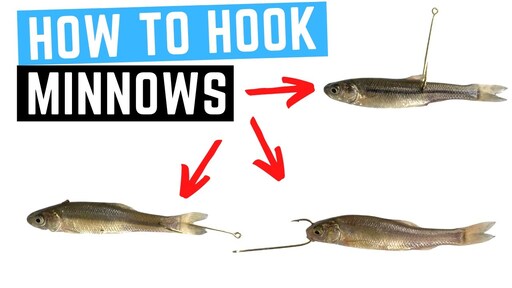
There are essentially 3 ways to hook a minnow without killing it. These are:
- Nose (Lip) Hook
- Back Hook
- Tail Hook
Each one of these is specialized for certain fishing methods, but these 3 hooking methods are the only ways to fish actual “live” bait.
3. Nose Hooking
The nose or lip hooking technique is used when frequently casting or trolling your live minnow. You can even use the minnow as a trailer bait this way.
Make sure not to hoot the minnow too far back and puncture its head. Hook the minnow directly through the bottom lip and out the top lip, or nose of the bait.
The main issue of nose hooking a minnow is that the minnow will not survive as long.
When you hook it through the lip, you only allow a very small amount of water to enter the mouth and pass through the gills. The minnow will suffocate after about 15 minutes.
2. Tail Hooking
Hooking the minnow through the tail is used for fishing in one spot with a sinker on the bottom, or a bobber on the surface.
Tail hooking is usually best for smaller minnows and baitfish. This is because bigger heavier baitfish can be torn off the hook while casting or by a fish that doesn’t quite eat the whole thing.
1. Back Hooking
Back hooking is also used for stationary fishing. The difference between back hooking and tail hooking is that back hooking the minnow is much better for larger minnows or bluegill.
The back is a very sturdy part of the fish and your hooks will not through the fish.
Hook the fish below the spine to make sure the hook is in a secure position. Just make sure not to hit the spine with the hook as this can obviously paralyze or even kill the baitfish.
Tackle for Live Minnow Fishing
Hook Selection
The most important tackle when using live minnows is the hook. You want to use as light wire hook as you possible can. The thinner the hook, the less intrusive and damaging it is to the minnow.
This can be a bit tricky because often times when you are fishing with live bait, you are targeting bigger fish and might need a bit heavier duty hook.
So just try to use the smallest wire hook possible that you know can still handle bigger fish.
Other Live Bait Tackle
As a rule of thumb, try to use lighter equipment. Lighter equipment is easier on the live bait and helps keep it alive.
Also consider using swivels because live bait tends to turn and twist around the live causing tangles and weak spots. Swivels will get rid of this problem.
Keeping Your Stored Minnows Alive
It is crucial that you keep your whole store of minnows alive while fishing. There are a couple types of live wells that will do this.
The first type of live will is one that floats in the lake and gives your minnows oxygenated water and keeps them acclimated to the lake your fishing.
The other type of live well has an aerator to keep oxygen in the water. I personally prefer the floating live well as it is just easier and requires less parts.

Additional Tips to Keep Your Minnows Alive
- Choose a Good Container: Use a minnow bucket or aerated container with a lid. It should have enough space for the minnows to move around and sufficient aeration to provide oxygen.
- Water Quality: Use clean, non-chlorinated water from the same source as where you caught the minnows. Minnows are sensitive to changes in water chemistry, so try to replicate their natural environment as closely as possible.
- Aeration: Proper aeration is crucial. Invest in a battery-operated aerator or an aerated container to maintain oxygen levels in the water. This prevents the minnows from suffocating and keeps them lively.
- Temperature Control: Minnows are cold-blooded creatures, so water temperature affects their metabolism. Keep the water at a suitable temperature for the specific minnow species you’re using. Generally, around 50-70°F (10-21°C) is a safe range.
- Avoid Overcrowding: Don’t overcrowd the container. Too many minnows in a small space can lead to stress and oxygen depletion. Maintain a reasonable ratio of minnows to water volume.
- Handling Minnows: Handle minnows gently to avoid injuring them. Use a soft, wet hand or a small net. Rough handling can stress or even kill them
- Dark Environment: Minimize exposure to direct sunlight, as it can increase water temperature and stress the minnows. Keep the container in a shaded area or cover it with a cloth.
- Minimize Stress: Try not to fish your minnows too harshly. When stationary fishing, leave the minnow out in the water for as long as possible. Don’t cast and retrieve it too often as each cast will damage the minnow a little more.
Tying this Off
In a nutshell, mastering the art of hooking a minnow without causing harm is all about finesse and care.
By selecting the right hook, handling gently, and allowing it to swim naturally, you’re not only preserving its vitality but also enhancing your chances of a successful catch.
So, armed with these techniques, you’re all set for an enjoyable fishing experience that’s considerate of both your bait and your game.


